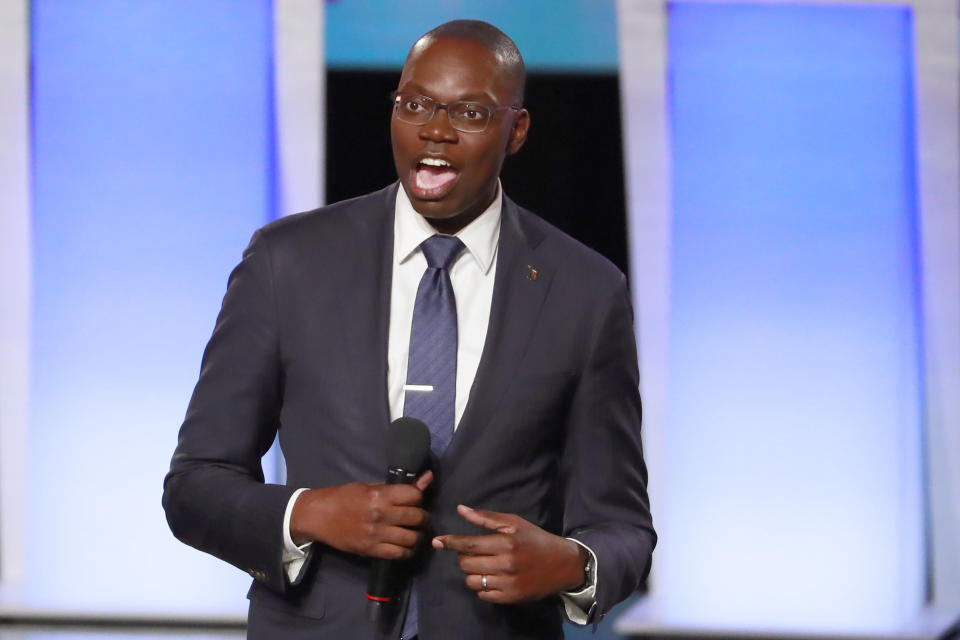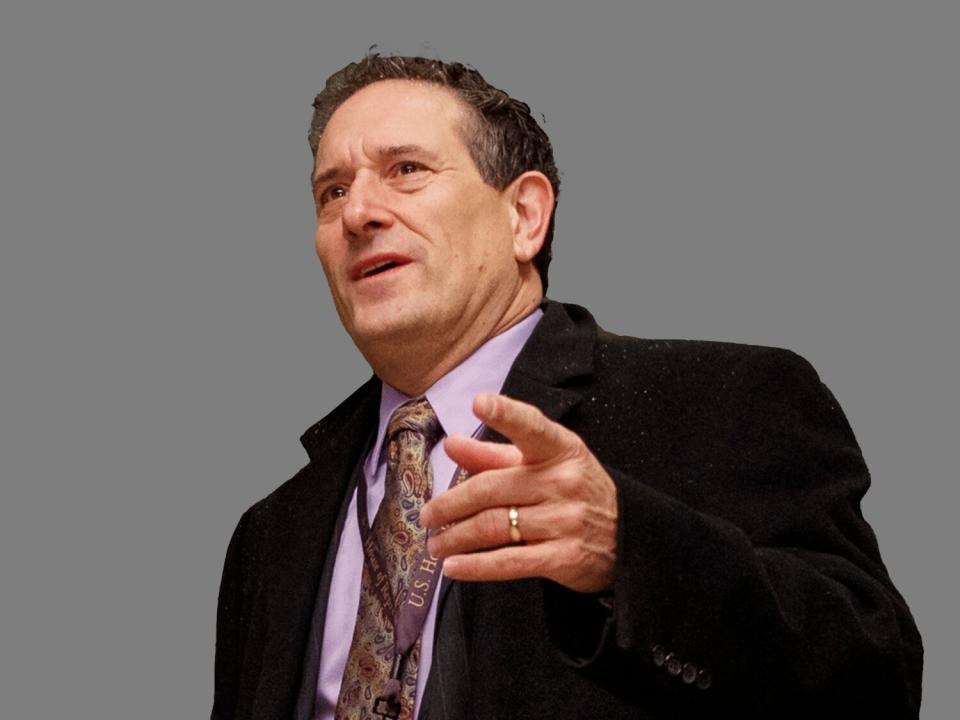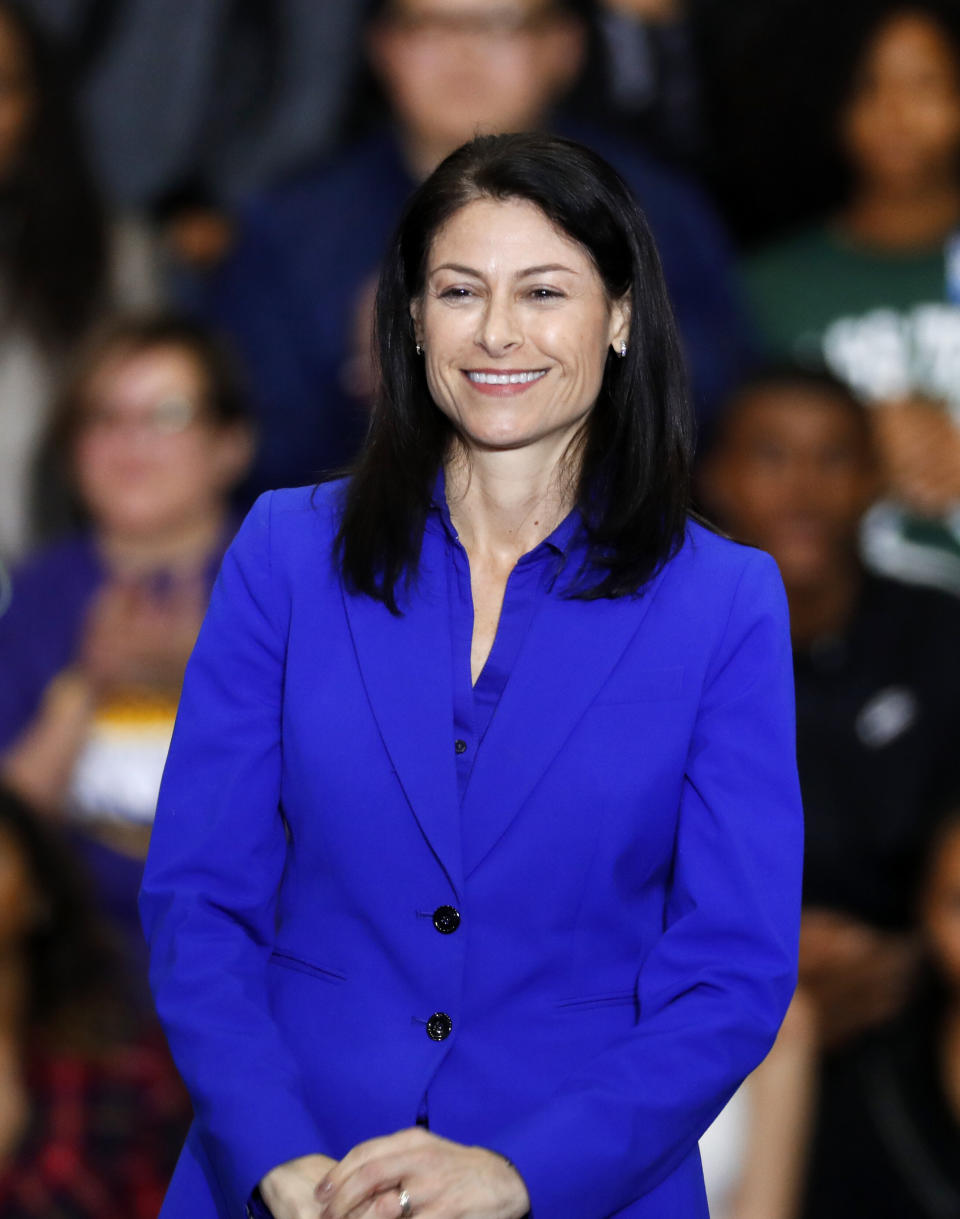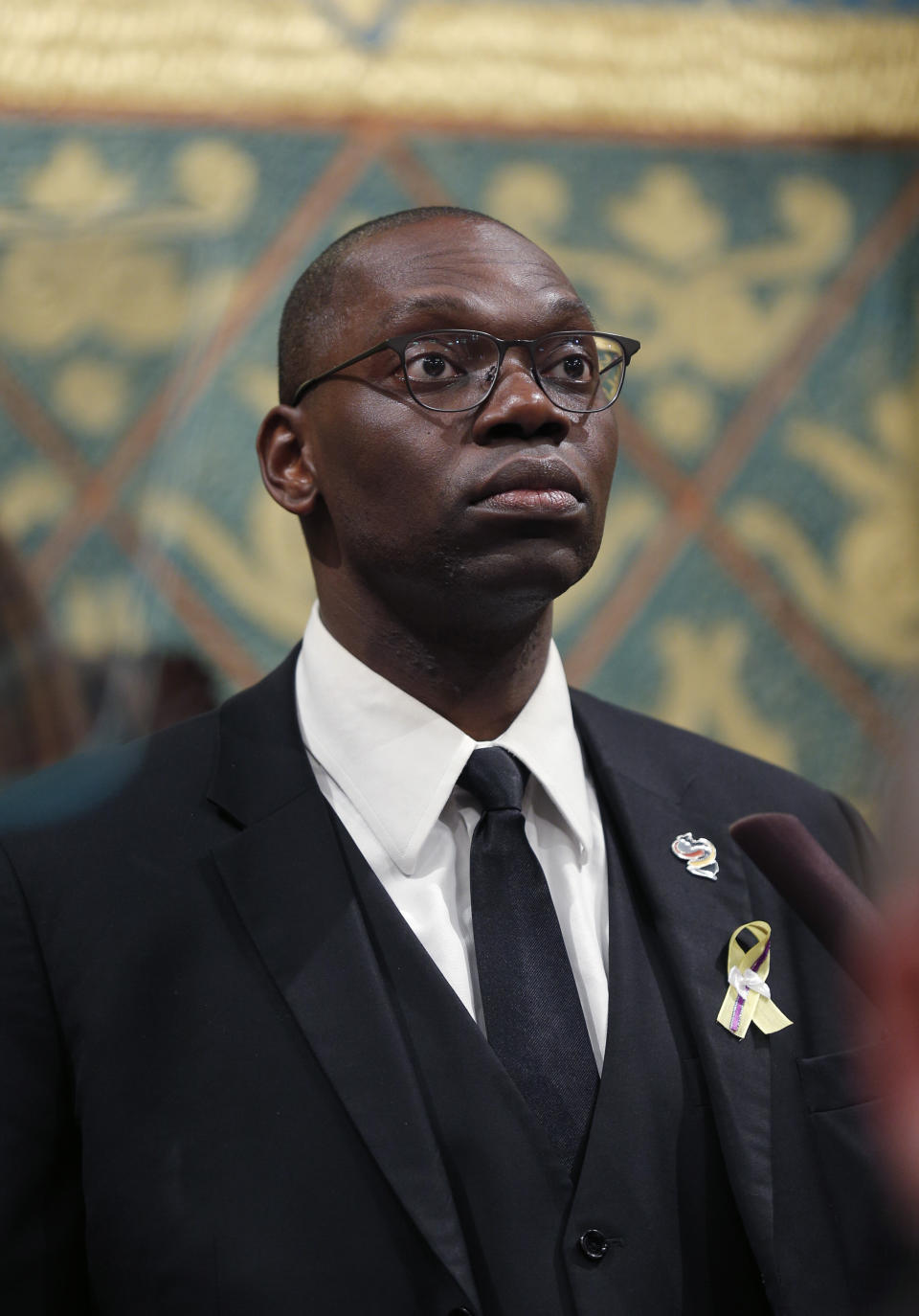Democrats Dominated Michigan In 2018. They Disagree On How To Do It Again In 2020.
DETROIT ― If the Democratic electoral earthquake of 2018 had an epicenter, it might have been Michigan.
Two years after the party shockingly lost the state to President Donald Trump, Democrats romped. Their gubernatorial candidate, Gretchen Whitmer, won by an impressive 10 percentage points. They swept races for U.S. Senate and attorney general, passed progressive policies via referendum ― including marijuana legalization, automatic voter registration and creation of a commission to end gerrymandering – and flipped two GOP-held seats among the state’s 14-member House delegation.
So it seems like it will be a good idea for whoever emerges as the 2020 Democratic presidential pick to listen to 2018’s victors. One problem: key Michigan Democrats can’t agree on what exactly the playbook was.

Four Michigan Democrats, all of whom first won their current office in 2018, took time during this week’s debates in Detroit featuring the party’s presidential field to offer their thesis on what the eventual nominee should do to lock down Michigan’s 16 electoral votes. None of them had exactly the same solution, and two of them ― Reps. Andy Levin and Elissa Slotkin ― had almost opposite prescriptions.
The state ― which Trump won by just over 10,000 votes, making him the first Republican White House candidate to carry it since 1988 ― is generally seen as the easiest state for Democrats to flip in 2020. And without it, the Democratic paths to the needed 270 electoral votes becomes a much tougher task.
Rep. Andy Levin

On Tuesday, the morning of the first debate, Levin announced he backs Elizabeth Warren in the presidential race, a coup for the Massachusetts senator. A member of the Congressional Progressive Caucus, Levin was elected to replace his father, former Rep. Sandy Levin. His district, which includes parts of Oakland and Macomb counties in the Detroit suburbs, is Democratic-leaning, but not overly so.
Not surprisingly for a Warren backer, Levin said he believes Michigan voters, including solid Democrats and swing-voting independents, are looking for big ideas and transformative economic change.
“People didn’t come out to vote in Michigan” in the 2016 presidential election, he said following the first night’s debate. The problem for the party was that its nominee, Hillary Clinton, “got way less votes than Barack Obama did” in winning Michigan in his 2012 reelection.
“We need a candidate who will inspire people to come out,” Levin said.
Rep. Elissa Slotkin

Slotkin, a former CIA officer and Defense Department official in the Obama administration, represents a more rural and GOP-tilted district that starts in the Detroit exurbs and stretches west to the state capitol in Lansing. A member of the House’s more moderate New Democrat Coalition, she won her seat from a Republican incumbent, Mike Bishop, by four percentage points.
Slotkin, who remains undecided in her party’s presidential primary, wrote in a Detroit Free Press op-ed that she was worried the candidates were lurching too far to the left and were too focused on large-scale systematic change instead of more incremental fixes to improve voters’ lives.
“I am increasingly concerned that they are trying to outdo one another in ways that are deeply unhelpful for the general election, rather than tuning in to the issues voters in Michigan need them to hear,” she wrote.
She was even blunter in an interview this week with The New York Times: “Michiganders are practical people, so they want to hear practical ideas of how to fix things, not pie-in-the-sky, over-the-top structural change in our economy and in our country.”
Attorney General Dana Nessel
Love HuffPost? Become a founding member of HuffPost Plus today.

Of the Democrats who ran statewide and won in Michigan in 2018, Nessel likely faced the toughest road to victory. Unlike Sen. Debbie Stabenow, she wasn’t an incumbent with a massive name identification and financial advantage. And unlike Whitmer, she wasn’t running against a deeply unpopular Republican. She ended up in the tightest race, defeating her GOP opponent by three percentage points.
Nessel, who said she is “unlikely” to wade into her party’s 2020 primary fight with an endorsement, ran her race with one key goal: To gin up Democratic turnout. She focused on abortion rights and the environment, and promised to “resist the Trump agenda.”
“I decided I wasn’t going to try to convert Trump voters, I was going to focus on getting Democratic turnout up,” she told HuffPost before Tuesday night’s debate. Her lesson for other Democrats? “Get voters excited about coming to vote for you instead of voting against someone else.”
That sounds like the language progressives want to hear. But Nessel also warned that a focus on increasing turnout doesn’t necessarily mean taking the most left-wing position possible on every issue.
Lt. Gov. Garlin Gilcrest

Gilchrist, who won sharing the same ticket as Whitmer, comes from the world of activism: He previously worked for both MoveOn and the Center for Community Change. His prescription for success had little to do with ideology, and a lot to do with organizing.
“We need to compete everywhere. We need to relentlessly expand the map,” he told HuffPost this week’s second debate on Wednesday night. “That’s the recipe.”
When confronted with the choice between Levin and Slotkin’s prescriptions, Gilchrist declined to take a side. He said a focus on issues like closing the skills gap among workers and investing in education, infrastructure and clean water would appeal to voters on both sides of the political divide.
“None of those fall anywhere on that spectrum, except that they’re things that voters care about,” he said. “So I don’t accept that choice.”
This article originally appeared on HuffPost.

